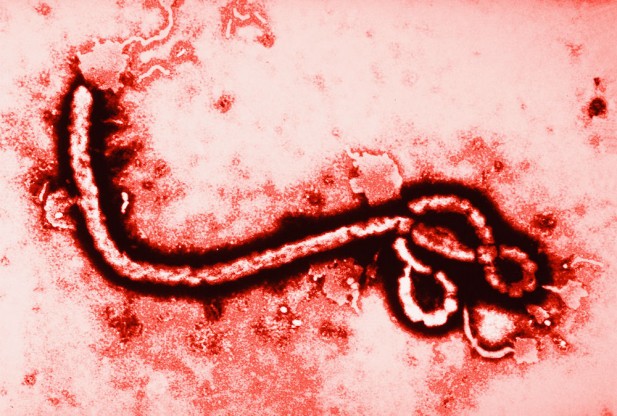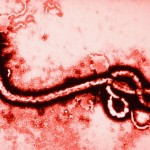 At the end of July 2014, there has been a steady awareness of a rare and mostly geographically contained disease breaking cover from the far flung lands of West Africa and due to air travel making a noise in the western world.
At the end of July 2014, there has been a steady awareness of a rare and mostly geographically contained disease breaking cover from the far flung lands of West Africa and due to air travel making a noise in the western world.
As most nutritional therapists are engaged in non-contagious disease care, it is tempting to think that infectious diseases are diminishing risk and occurrence. However, there are periodic outbreaks that naturally raise tensions and all the more so when there is no known treatment and a death rate of approximately 70% depending on the genetic strain involved. Ebola-Zaire, now raging in West Africa, is just the most common of five Ebola species.
With 1048 reported cases and 632 deaths since March—a 60% fatality rate—the West African outbreak shows no signs of tapering off. People in the affected countries are more mobile than in the central African regions struck by Ebola in the past. Before the current one, all known outbreaks had caused fewer than 2400 cases, across a dozen African countries over 3 decades.
Ebola virus is transmitted through direct contact with body fluids of infected animals or people.[1] Increased risk of transmission occurs in the acute phase of the infection, when patients are viremic. Once the virus is cleared, there is little risk of transmission. The exception may be with breast milk or semen, in which the virus has been found 15 and 91 days postinfection, respectively.
Once in human communities, the virus can spread rapidly via person to person contact and in health care settings in which resources are limited or barrier nursing protocols are not implemented.[2] There is no evidence of aerosol transmission in humans to date. However, if working with individuals infected, facial protection is recommended as is the protection of mucous membranes and skin lesions.
Protection.
Cleaning with soap and disinfectant and irrigating mucous membranes are immediate recommendations. Inactivation of the Ebola virus may be achieved within 1-hour exposure to formalin (1%), acetone, methanol, or diethyl ether. It has also been reported that heating at 75 degrees C for 30 minutes, 60 degrees C for 60 minutes, exposure to midday sun for 20 to 100minutes and irradiation will have the same effect.6
Gamma radiation, 2% hypochlorite, 2% glutaraldehyde, 5% peracetic acid, 0.3% beta-propiolactone (37 degrees C for 30 mins), solutions containing containing sodium dodecyl sulphate (SDS) or polyethylene glycol p-phenylether, and standard hospital grade disinfectants have all been recommended to neutralise Ebola virus.[3]
Transmission
Four routes for the spread of microorganisms exist:
- Contact,
- Airborne,
- Common vehicle, and
- Vector-borne.[4]
Contact transmission involves direct contact in which body-to-body contact takes place, or indirect in which the susceptible person comes into contact with a contaminated intermediate host (fomite). Large droplet transmission is judged a form of contact transmission in which large droplets (>5 microns) contaminated with microorganisms are generated when an infected person sneezes, coughs, or talks. These droplets are propelled short distances (<1 m) and deposited on a susceptible host’s conjunctiva or mucosa.
Airborne transmission happens by aerolisation of an infectious agent through droplet nuclei (residua of large droplets containing microorganisms that have evaporated to <5 microns). These residual droplets become aerosolised and disperse widely, dependent on environmental conditions, and remain suspended in air for indefinite periods.[5], [6] Ebola is NOT passed via aerosols like many highly-contagious respiratory viruses. By the time an infected person is highly contagious, it is usually obvious that they are sick (because they are either bleeding, vomiting, or having diarrhoea), so oftentimes the only people infected are those caring for the patient without proper protective clothing (gloves, eye protection, mask, etc…).
Common vehicle transmission involves one inanimate vehicle, which transmits infection to many hosts, and typically applies to microorganisms spread by food and water. Vector-borne transmission results from the spread of disease by insects and vermin.
EBOV is shed in a wide variety of bodily fluids during the acute phase of illness, including saliva, breast milk, stool, and tears. In most cases, the infected bodily fluid was not visibly contaminated by blood. Of particular concern is the frequent presence of EBOV in saliva early during the course of disease, where it could be transmitted to others through intimate contact and from sharing food. The conventional assumptions and field observations that most EBOV transmission comes from direct contact with blood or bodily fluids of an infected patient during the acute phase of illness appear to be correct. The risk of casual contacts with the skin, such as shaking hands, is likely to be low. Environmental contamination and fomites do not appear to pose a significant risk when currently recommended infection control guidelines for the viral haemorrhagic fevers are followed.[7]
Conclusion
Despite the inevitable feeling of anxiety, hyped up by well-meaning but ill-informed or speculative writers the chance of Ebola making it out of the primary geographic areas and becoming a pandemic is exceptionally low, the symptoms are well recognised and the person can be contained quickly, the virus survives a very short time outside of the body and whilst containment may be problematic it is very manageable.
References
[1] Centers for Food Security and Public Health: Viral hemorrhagic fevers—Ebola and Marburg, 2009 (http://www.cfsph.iastate.edu/Factsheets/pdfs/viral_hemorrhagic_fever_filovirus.pdf).
[2] Kuhn JH: Filoviruses, New York, 2008, Springer.
[3] Schou S, Hansen AK: Marburg and Ebola virus infections in laboratory non-human primates: A literature review. Comp Med 50:108–123, 2000 View Abstract
[4] J Chin (Ed.), Control of communicable diseases manual (16th edn.), American Public Health Association, Washington, DC (2000) View Abstract
[5] M Withers, G Christopher. Aeromedical evacuation of biological warfare casualties: a treatise on infectious diseases on aircraft Mil Med, 165 (suppl 3) (2000), pp. 1–21 View Abstract
[6] E Nardell, J Keegan, S Cheney, SC Etkind Airborne infection: theoretical limits of protection achievable by building ventilation Am Rev Respir Dis, 144 (1991), pp. 302 View Abstract
[7] Bausch DG, Towner JS, Dowell SF, Kaducu F, Lukwiya M, Sanchez A, Nichol ST, Ksiazek TG, Rollin PE.
Assessment of the risk of Ebola virus transmission from bodily fluids and fomites. J Infect Dis. 2007 Nov 15;196 Suppl 2:S142-7. View Full Paper





